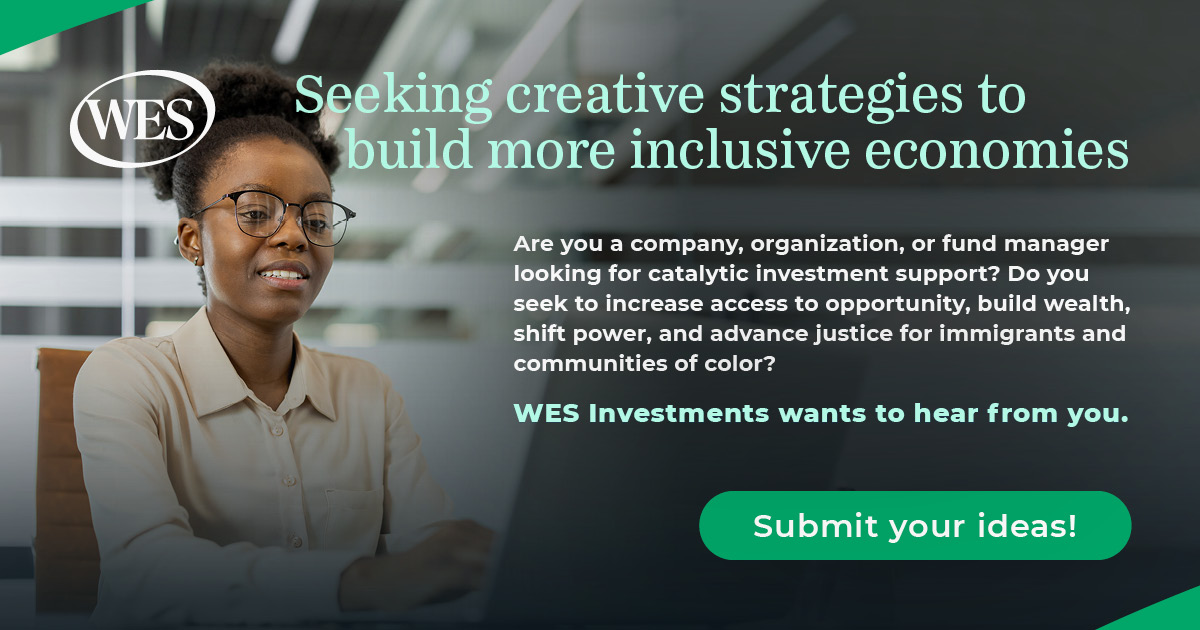
When Laura Roberts quit her job as a schoolteacher in 1999 to take over her family’s chemical company, Pantheon Enterprises, her goal was simple: transform the industry. A self-professed tree-hugger, Roberts rejected the notion that environmentally safe products must be less effective, more expensive, and harder to use. She told board members about her idea of reorienting Pantheon’s business model around purpose, empathy, and cooperation. They looked at her like she was crazy. Roberts’ company is now 15 times the size it was when she took the helm and made consciousness its guiding principle.
Despite the financial performance of “conscious” companies like Costco, Google, and UPS, the myth that “doing well” and “doing good” are at odds with one another persists. Babson College professor Raj Sisodia studied 28 conscious companies from 1996 to 2011 and discovered they outperformed the S&P 500 index by a factor of 10.5. One of the most critical drivers of these organizations’ success is their innovation. What’s the relationship between consciousness and innovation and how do conscious companies continuously deliver results?
Purpose: Tapping the Ultimate Engagement Driver
While the prospect of free gourmet meals, massages, and haircuts may seem to drive Google’s recruiting and engagement efforts, the company’s purpose is far more compelling: to organize the world’s information, and make it universally accessible and useful. Aspiring Googlers flood recruiters with more than 2 million applications a year for the opportunity to help the company leverage technology to support greater equality in the world. Google’s purpose not only acts as a talent magnet, but also a perpetual innovation challenge. Team members strive to develop new products, services, and technologies that will take the company one step closer to realizing its mission.
The connection between purpose and innovation also plays out at Shea Radiance, a startup skin-care company whose products use ingredients farmed sustainably by women-led cooperatives in West Africa. “We’re not yet at a stage where we have a lot of money to pay people high salaries,” says founder and CEO Funlayo Alabi. “But the people who work here are excited and motivated about our mission, so they bring their A-game every day.”
When a potentially breakthrough distribution deal with Target went south in 2012, most fledgling organizations would have accepted defeat. Instead, Alabi and her team reflected on what they learned and pivoted their go-to-market approach. Large-scale distribution was pointless without sufficient marketing support — an expense that Shea Radiance was not able to bear. Instead, the team went to work cultivating a community of fans and partners who connected with the quality of the products and, perhaps more importantly, the company’s mission.
The bottom-up demand creation approach is working. Today, Shea Radiance offers 20 different hair and skin products, distributed by Select Nutrition, which services more than 7,000 stores. Based on current growth rates, sales will gross tens of millions of dollars by 2020. “Everyone on our team is passionate about what we’re doing — the products we make and the women who produce and use them,” Alabi explains. “We are in ongoing dialogue about how to keep innovating.”
Stakeholder Orientation: Discovering Partners in Value Creation
“Every business creates, and sometimes destroys, value for customers, suppliers, employees, communities and financiers,” says R. Edward Freeman, a professor at the Darden School of the University of Virginia. “The idea that business is about maximizing profits for shareholders is outdated and doesn’t work very well. Great companies endure because they manage to get stakeholder interests aligned in the same direction.”
Close customer collaboration is now the gospel for innovators, conscious or not. The rise of Design Thinking — a problem-solving methodology developed at Stanford’s D-School — places the end user at the center of the innovation process. Building a deep understanding of customer needs ensures innovators are solving the right problems and creating solutions that the market will more likely embrace.
Warby Parker, a certified B Corp and designer eyewear company now valued at over a billion dollars, provides a good example. Its entire business model is grounded in a profound sense of empathy. The $95 price for stylish frames, free home try-on model, and partnership with nonprofits working on vision issues emerged from a deep-seated understanding of customers’ wants and needs. Co-CEO Neil Blumenthal describes the secret to his team’s innovation success as “thinking like a beginner.”
“We encourage employees to approach the world with a beginner’s mindset,” Blumenthal says. “This means banishing preconceptions and embracing curiosity. Experts have ready-made solutions; beginners have questions that may ultimately lead to better, newer solutions.”
“When we started thinking about competitors as potential partners, that opened up a world of possibilities for us,” explains Laura Roberts, CEO of Pantheon Enterprises. “We’d show up at trade shows and have a tiny booth off in the corner. Vista Outdoor, our biggest sporting goods competition, would have half the floor. There was no way we could compete.” Instead, Roberts and her team pitched Vista a partnership. Pantheon would provide an equally effective, more eco-friendly product to be sold under the Vista brand. Both businesses benefited — and all parties profited from the move away from toxic chemicals.
Leadership: Serving for Growth
Conscious leaders like Daniel Lubetsky, the CEO of Kind Snacks, see limitless possibilities for self, organizational, and market development. Lubetsky’s company produces one of the fastest growing energy and nutrition bars in the US. “I’m very inquisitive. I love hanging around people who can teach me. I ask a lot of questions. And I’m very introspective and self-critical. I try hard to always question myself and wonder: ‘What could I have done better?’” Lubetsky says. There is a fine line that conscious innovation leaders continuously skirt between inspiring teams to reach as far as possible and demanding perfection. “The culture at our company is to be self-critical, but you have to balance that as a leader with praise for your team,” he says. If recognition is one way to help team members stay focused and optimistic, another is empowerment. “We’re building such an incredible ownership culture within the team and it’s part of what’s propelling us,” Lubetsky explains.
Southwest Airlines also shows the potential impact of leading from behind. Herb Kelleher, Southwest’s co-founder, chairman emeritus and former CEO, says, “Power should be reserved for weightlifting and boats.” There is little emphasis on organizational hierarchy at the company he built. Leaders entrust decision-making authority to individual team members and small management teams, enabling everyday innovation to thrive. Maintenance workers regularly test and implement ideas to improve aircraft service, saving time and money. In an ongoing quest to improve departure-time accuracy, flight attendants — not cleaning crews — clean planes between flights. These types of bottom-up initiatives contribute to Southwest’s low-cost, customer-focused strategy, and supported an almost 90 percent rise in its stock price in 2015.
Culture: Enabling Sustainable Performance
In their 2016 book, “Shakti Leadership,” Raj Sisodia and Nilima Bhat argue that traditional companies are primarily oriented around a “masculine” worldview that prioritizes competition, power, and hierarchy. Conscious companies honor equally “feminine” qualities like empathy, cooperation, and creativity. Infusing feminine energy into the workplace does not negatively impact ambition, drive, or resilience — it helps these attributes to flourish.
Warby Parker’s CFO, Steve Miller, explains that creating a supportive innovation culture begins with selection decisions. “Getting the right people on our team makes a big difference. We hire ‘nice people’ who like to achieve and solve complex problems.” By carefully curating talent, his organization is able to focus on creating the conditions for them to thrive. Warby’s values, which adorn the walls of its headquarters, are also critical performance enablers. One of them —“Learn. Grow. Repeat.” — captures the essence of sound innovation. Leadership models these values by constantly seeking out new ideas. Regular hackathons and demo days provide the opportunity for people from all parts of the organization to collaborate in addressing key challenges. When projects under-deliver, the process of righting the course is “compassionately pragmatic.” Miller explains: “We pull the team together to review the roadmap. It’s an honest conversation about what’s working and what’s not. Then we put a process in place to track the results of any changes we make.” If updates bear fruit, they stick. If the project continues to fall short, the team goes back to the drawing board, or pulls the plug.
Even established innovation powerhouses are awakening to the benefits of consciousness to deliver against their innovation goals. General Electric, once known for its hard-charging culture, is undergoing a major transformation. One clear marker of this transition is the elimination of its infamous “rank and yank” system, which insisted managers fire the bottom 10 percent of underperformers on a yearly basis. “It existed in more or less the same form since I started at the company in 1979,” says Susan Peters, GE’s head of human resources. “But it had become more a ritual than a way of moving the company upwards and forwards.” A system to support ongoing feedback via an app will replace GE’s annual performance review process.
The evolution of Crotonville, GE’s leadership development center in Ossining, NY, also demonstrates a shift towards the feminine. An English-style pub was replaced by an airy coffee shop to support spontaneous discussions. Up-and-coming managers are encouraged to take courses in mindfulness and suminagashi, the Japanese art of painting on water. They watch a string quartets perform and practice improvisation to build understanding of team dynamics.
Towards a More Conscious, Innovative Future
Wall Street is catching up. In the US alone, at least $7 trillion is now invested in companies that value people and planet alongside profit, according to the Forum for Sustainable and Responsible Investment. Research from Envestnet PMC shows that number rose from $639 billion in 1995 and $3.7 trillion in 2012.
Increasingly, organizations are recognizing consciousness as a catalyst of innovation, performance, and good. A deep sense of purpose attracts, inspires, and engages high performing team members. Managing for multiple stakeholders promotes empathy and collaboration — behaviors shown to support innovation impact. Leaders focused on development of self and others model a commitment to continuous improvement necessary to tackle major innovation challenges. Cultures that reject “command and control” principles in favor of openness, empowerment, and flexibility are well suited to thrive in an innovation landscape that demands adaptability — meaning the real world, today.
 Daniel Dworkin is a partner with Schaffer Consulting, a boutique management consultancy based in Stamford, CT. He has over a decade of experience helping organizations achieve their full potential. Daniel’s work focuses on organizational transformation. He collaborates with for-profit and nonprofit companies to achieve breakthroughs on their most important priorities and build capabilities for lasting impact. Daniel writes for Chief Executive Magazine, Forbes, and The Harvard Business Review, among others. He is co-chair of the board of the New York City Chapter of Conscious Capitalism, Inc.
Daniel Dworkin is a partner with Schaffer Consulting, a boutique management consultancy based in Stamford, CT. He has over a decade of experience helping organizations achieve their full potential. Daniel’s work focuses on organizational transformation. He collaborates with for-profit and nonprofit companies to achieve breakthroughs on their most important priorities and build capabilities for lasting impact. Daniel writes for Chief Executive Magazine, Forbes, and The Harvard Business Review, among others. He is co-chair of the board of the New York City Chapter of Conscious Capitalism, Inc.






